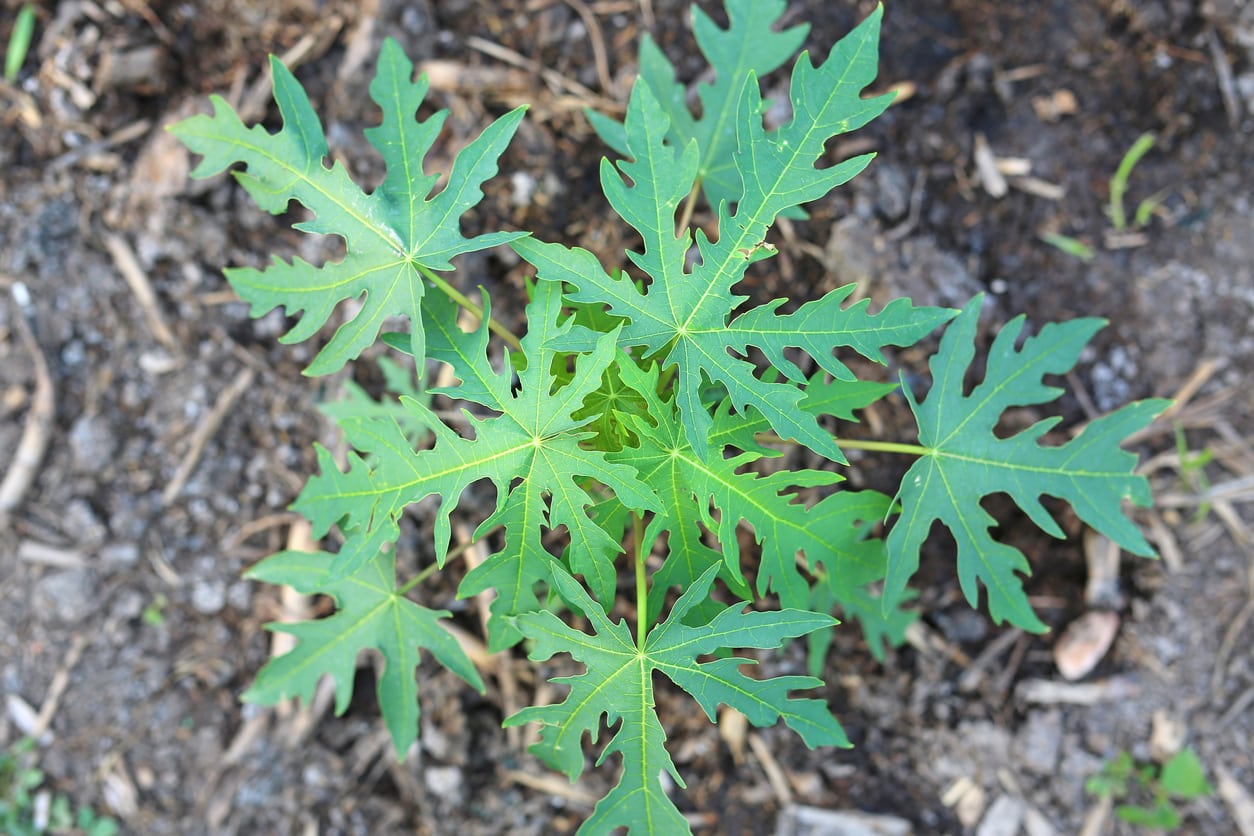Papaya Seedlings Damping Off – Learn About Papaya Damping Off Treatment


Fungi of many varieties wait to invade plants. They can cause problems on roots, stems, leaves, and even fruit. Of these varieties, at least four species can cause damping off in papaya. Papaya seedlings damping off can mean the end of the crop as the fungus eventually rots out the stem. What causes papaya damping off and how can you prevent it? Some facts and methods to help reduce the chances of this common disease are listed below.
What Causes Papaya Damping Off?
Damping off in papaya is seen as a serious disease in high heat situations. Very young seedlings are most susceptible and become more resistant as they grow. The fungus causes stem tissues to collapse and eventually the little papaya plant will die. Both pre-emergence and post-emergence damping off can occur. The first occurrence causes seeds to fail to germinate, while the second slowly kills young plants. It is important to implement consistent papaya damping off treatment for healthy seedlings. Once you know the cause, it is easier to learn how to prevent papaya damping off in the first place. If you already notice papaya seedlings damping off, it is too late to do much about the disease. The pathogens may be any number of species which require high temperatures and humidity, excess soil moisture, compacted soil and too much nitrogen. The fungi live in soil but may occasionally come in on contaminated seeds. When conditions are warm and wet, and especially when seedlings are crowded, the fungus spreads quickly among the young plants. This can decimate future crops and needs to be prevented prior to planting and with good cultural practices.
How to Prevent Papaya Damping Off
The symptoms of damping off in papaya start at the soil line. Lesions appear on the stems in sites closest to the ground. The disease actually starts attacking the seed or roots of germinated seed. It causes seed to rot before it can germinate or, in seedlings, it attacks the roots and wilting will occur. Since above ground observation of wilting can be any number of problems, the diagnosis is usually not made until the stem lesions occur. Once symptoms are observed, there is little to be done. Treatment is not recommended but pre-planting strategies and cultural care can minimize the risk of this fungal disease. It all starts with good preparation. Source plants from reputable growers that can certify them disease free. Choose plants that are resistant to the disease such as 'Solo.' In areas where damping off is considered the norm, pre-treat the seed with a fungicide. Prepare the soil well and ensure that it drains quickly. Young seedlings need water but ensure soil is not soggy and, if grown in containers, the drainage holes are open and useful. Practice crop rotation and avoid excess application of nitrogen fertilizers. Sanitize all containers and tools. In some instances, soil application of fungicide may be necessary prior to planting but can change the natural balance of soil and leave behind toxic residues. This is the current large-scale production method of papaya damping off treatment, but the home gardener can control it in a smaller situation with good cultural preparation and practices. Note: Any recommendations pertaining to the use of chemicals are for informational purposes only. Chemical control should only be used as a last resort, as organic approaches are safer and more environmentally friendly.
Sign up for the Gardening Know How newsletter today and receive a free copy of our e-book "How to Grow Delicious Tomatoes".

Bonnie Grant is a professional landscaper with a Certification in Urban Gardening. She has been gardening and writing for 15 years. A former professional chef, she has a passion for edible landscaping.